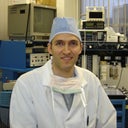You are correct in your observation that fat grafting to the face may not be as popular as the other options for volumizing and contouring the face- facial implants and tissue fillers (at least not yet anyways). But, fat grafting has become more and more popular more recently (especially with the increased interest in fat transfers to the buttocks (Brazilian butt lift) and breasts (lipoaugmentation) as of late). There has been an exponential increase in interest in what can be done with autologous fat cells, stem cells, platelet derived growth factors and platelet enriched plasma. I feel that one of the Holy Grail pursuits in plastic surgery is to engineer tissue so that artificial implants will be obsolete one day. We as scientists and surgeons should never be happy with the status quo and should always strive to achieve best long term outcomes with the least chances of complications. Fat transfers to the face has actually been around for over 20 years. It has only gained more interest in the past 10 years or so as we as plastic surgeons have become more aware of the process of aging and the volume that is lost during the process. We realized that the standard traditional facelift procedure to just remove loose skin (while ignoring the volume loss of the face) does not adequately restore the youthful contours of the face. The advent of artificial tissue fillers(hyaluronic acid based) in the early 2000's really gave us a great tool to restore some of this volume. But, these tissue fillers are only very temporary and expensive and have to be re- injected for as long as you want to maintain the effect (which is one guarantee we can give you), and the large volume (and costs) that is typically required for comprehensive facial volume restoration makes it not feasible for this purpose. Facial implants may be another option to help restore volume in certain parts of the face, but they are more limited in where they can be used effectively(cheeks and chin). Facial volume restoration today is much more comprehensive than that (such as the temporal fossa, tear troughs, superior palpebral sulcus, nasolabial folds, lips, submalar regions and mandibular margin (as well as the cheeks and chin)). Implants are just not adequate. They never feel natural. They do have a higher risk of infection, nerve injury and can migrate (as well as scarring and longer recovery). Using a solid hard implant to replace soft tissue just doesn't make sense, and should not be the gold standard. Fat transfers can address all these issues. It does have limitations and risks though, just like every different option does. It also has a very steep learning curve as proper technique is critical for its success. Good technique and appreciation for its complexities only come with many years of extensive experience. It also requires a good appreciation for aesthetics as it is basically sculpting with fat. Surgeons who don't have as much training and experience will not promote its advantages and just frankly will not be able to produce the same results- just like everything else do. In this case, the message and messenger carry the same responsibility. I recommend you see only board certified plastic surgeons with lots of experience and who can show you lots of good before and after pics. Best wishes.



